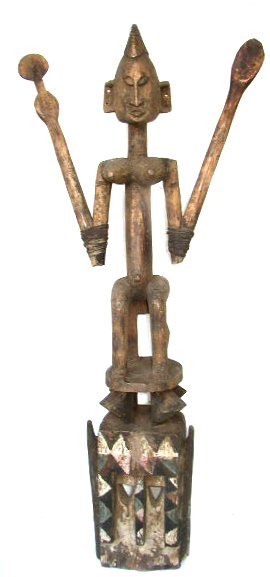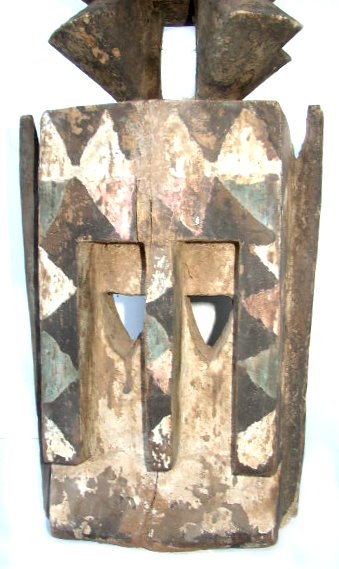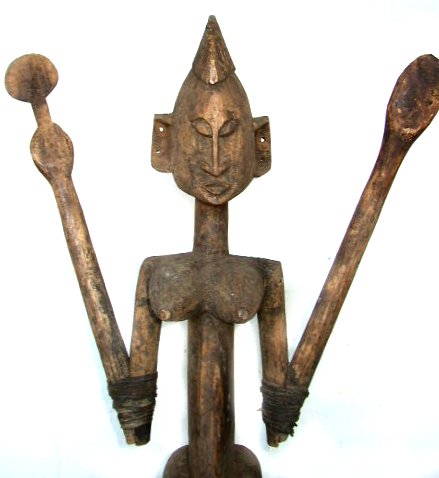 Dogon (Dogo, Habbé, Kado, Kibisi, Tombo),
Dogon (Dogo, Habbé, Kado, Kibisi, Tombo),  Dogon (Dogo, Habbé, Kado, Kibisi, Tombo),
Dogon (Dogo, Habbé, Kado, Kibisi, Tombo),
Satimbe mask. The Dogon people inhabit the large austere
Bandiagara plateau, with most of the villages situated on cliffs to the north and the
east. The Dogon are among African cultures that have remained closest to their ancestral
traditions. On their small fields they cultivate their staple diet, millet. The millet is
stored in high quadrangular granaries around which they build their houses. Dogon art is
extremely versatile, although common stylistic characteristics – such as a tendency
towards stylization – are apparent on the masks and figures. The functions of Dogon
masks all based upon an extensive mythology. One of the fundamental tenets is that both
human and animals have their nyama (soul substance) which returns after death into
a mask. The satimbe mask presented here is
surmounted by a standing female figure with outstretched arms. This figure represents Yasigine, the only woman admitted to the Awa male society. The masks were used in burial
ceremonies to drive away the souls of the deceased who might harm the living and also at
the end of mourning and at various other rituals.
Material: wood
Size:
H. 39˝”, W. 18”, D.
7˝”

